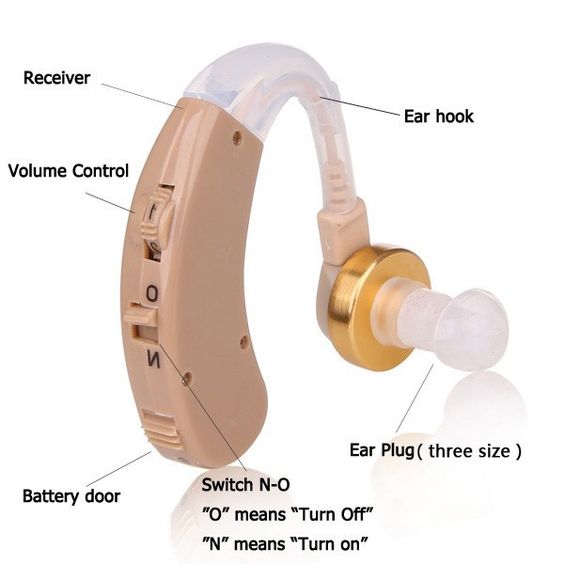In the world of audiology, the term "ear machine" often refers to various devices designed to enhance, support, or correct hearing. These devices can range from hearing aids to assistive listening devices, each serving distinct purposes and providing different levels of auditory support. At Decibel Clinic, we strive to demystify these technologies and help you find the best solutions for your hearing needs. This article will explore what ear machine are, their types, and how they can benefit individuals experiencing hearing challenges.
What is an Ear Machine?
The term "ear machine" broadly encompasses devices used to improve hearing ability or provide auditory support. While most commonly associated with hearing aids, it also includes other types of assistive listening devices and technologies designed to enhance the auditory experience.
Types of Ear Machines
1. Hearing Aids
Hearing aids are perhaps the most well-known type of ear machine. They are electronic devices worn in or behind the ear that amplify sound for individuals with hearing loss. Modern hearing aids come with advanced features designed to cater to different levels of hearing impairment and personal preferences.
- Types of Hearing Aids:
- Behind-the-Ear (BTE) Hearing Aids: These are worn behind the ear and are connected to a custom earpiece. They are suitable for various degrees of hearing loss.
- In-the-Ear (ITE) Hearing Aids: These are custom-made to fit directly into the outer ear and are less visible than BTE models.
- In-the-Canal (ITC) and Completely-in-the-Canal (CIC) Hearing Aids: These are smaller and fit partially or completely within the ear canal, offering a more discreet appearance.
- Features: Modern hearing aids come equipped with features like Bluetooth connectivity for direct streaming, rechargeable batteries, and advanced noise reduction capabilities.
2. Assistive Listening Devices (ALDs)
Assistive Listening Devices are designed to enhance hearing in specific situations where hearing aids might not be sufficient. They are particularly useful in environments with significant background noise or where amplification of particular sounds is needed.
- Types of ALDs:
- FM Systems: Use radio waves to transmit sound from a microphone to a receiver worn by the listener. These are commonly used in educational settings and public spaces.
- Infrared Systems: Use infrared light to transmit sound signals, ideal for environments where privacy is important.
- Personal Amplifiers: Portable devices that amplify sound directly for individuals in various listening situations, such as one-on-one conversations or small group settings.
3. Cochlear Implants
Cochlear implants are advanced electronic devices designed for individuals with severe to profound hearing loss who do not benefit adequately from traditional hearing aids. They bypass damaged parts of the inner ear and directly stimulate the auditory nerve.
- Components:
- External Processor: Worn behind the ear, this component captures sound and converts it into digital signals.
- Implanted Device: Surgically placed under the skin, this device receives the signals from the external processor and stimulates the auditory nerve.
- Benefits: Cochlear implants can provide a sense of sound and speech understanding for those who cannot benefit from hearing aids alone.
4. Bone Conduction Devices
Bone conduction devices are used for individuals with conductive hearing loss or those who cannot wear traditional hearing aids due to ear infections or other medical conditions.
- How They Work: These devices transmit sound vibrations through the bones of the skull directly to the inner ear, bypassing the outer and middle ear.
- Types: They can be worn as a headband, an implantable device, or an adhesive pad.
Benefits of Ear Machines
Ear machines, including hearing aids and assistive devices, offer numerous benefits:
- Improved Communication: By amplifying sound and enhancing clarity, ear machines help individuals engage in conversations and understand speech more effectively.
- Increased Safety: Better hearing can enhance situational awareness, making it easier to detect important environmental sounds like alarms or approaching vehicles.
- Enhanced Quality of Life: By reducing the impact of hearing loss on daily activities and social interactions, ear machines contribute to overall well-being and quality of life.
Choosing the Right Ear Machine
Selecting the right ear machine depends on several factors, including the type and degree of hearing loss, lifestyle needs, and personal preferences. At Decibel Clinic, our expert audiologists conduct thorough evaluations to recommend the most suitable device for your individual needs. We provide personalized fittings, adjustments, and ongoing support to ensure that you get the most benefit from your ear machine.
Conclusion
Ear machines encompass a range of devices designed to improve hearing and auditory experiences, from hearing aids to assistive listening devices and cochlear implants. Understanding the different types and their benefits can help you make an informed decision about the best solution for your hearing needs. At Decibel Clinic, we are dedicated to guiding you through the selection process and providing ongoing support to enhance your hearing health. Contact us today to schedule a consultation and discover how our ear machines can help you achieve better hearing and a higher quality of life.





Comments